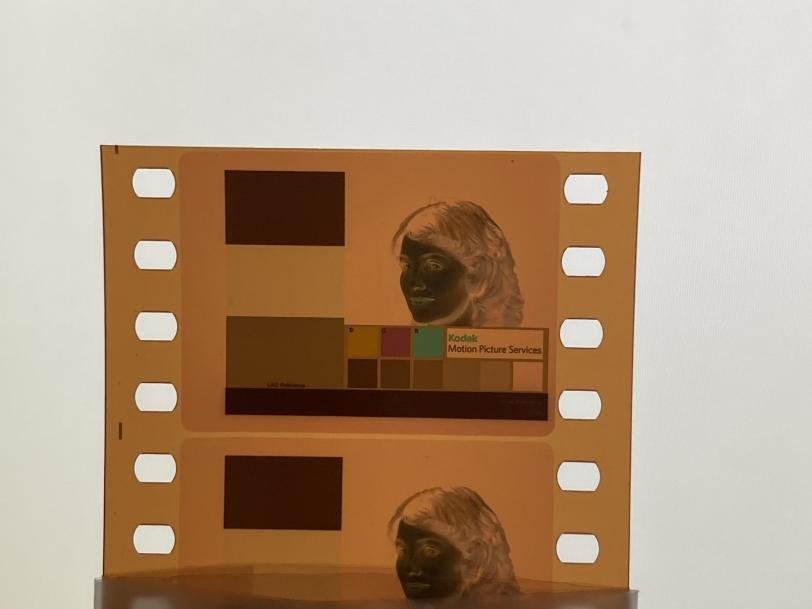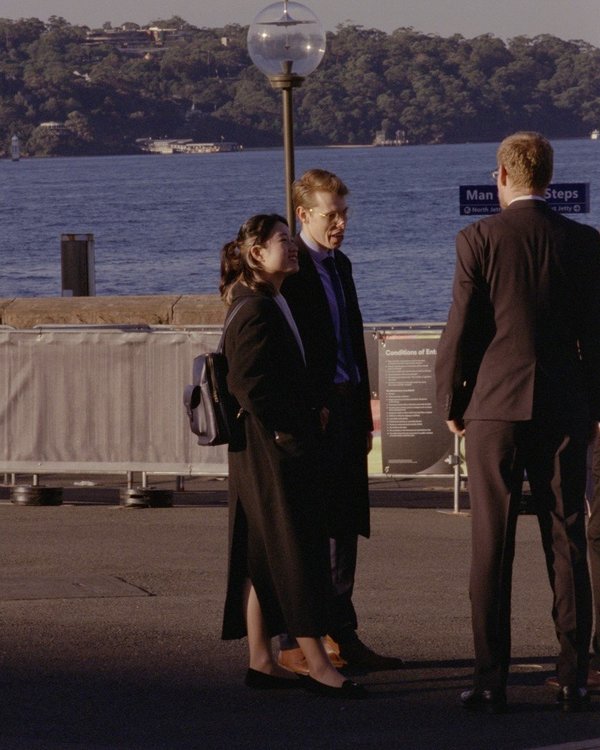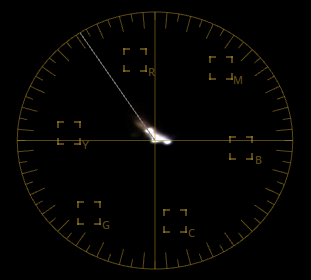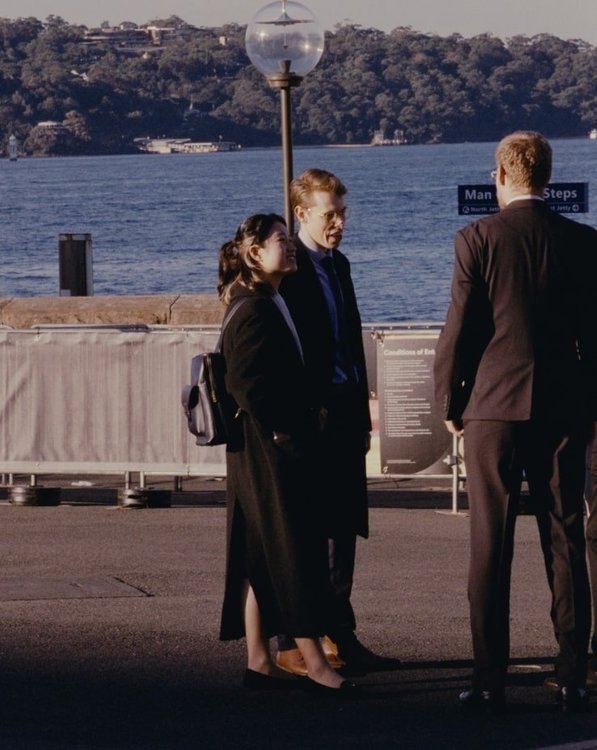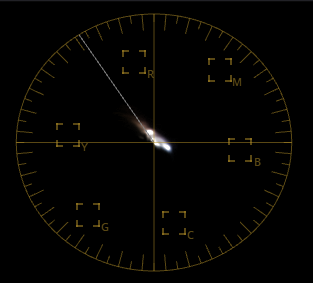
Seth Baldwin
Basic Member-
Posts
123 -
Joined
-
Last visited
About Seth Baldwin
- Birthday 12/23/1999
Profile Information
-
Occupation
Cinematographer
-
Location
Australia
Recent Profile Visitors
9,188 profile views
-
Hi Richard, I'm based in Australia and will be acquiring the same light valves and printernet unit quite soon. It's to operate a Bell and Howell Panel Printer for 35mm. The printernet unit has the PNet software cloned from a floppy disk onto a CF card. If you shoot me a message we may be able to arrange something when I have it all setup. Assuming you don't find someone else prior.
-
Can this LAD target be read with a 310T?
Seth Baldwin replied to Seth Baldwin's topic in Film Stocks & Processing
Cheers John -
I plan to use this older LAD film for process control, I have laser recorded LAD to 2254 as well but comparatively I'm noticing this Kodak supplied target is quite small. Would the XRite 310T be able to read this target without cross dye contamination from the surrounding patches?
-
How was 35mm slide film like ektachrome typically duplicated in the past for preservation purposes? Did they use color-negative intermediate stock like 2242, a stock designed specifically for slide, or a completely unique process? I'd imagine the gamma wouldn't transfer well over to 2242.
-
Just to confirm, is 2242 intermediate film able to meet IP aims from an IN? I ask because of course the traditional pipeline is camera negative > IP > IN > print. And since the camera negative has a different gamma to the intermediate film, and that was used to create an IP, would that mean the intermediate film is unable to create an IP from an IN? Where such a pipeline would be camera negative > IP > IN > IP. Or can one move from IP to IN to IP without issue.
-
Yeah it could be the case that raw scans of Vision3 are associated to look somewhat early 90s because they would just color-time an IP, scan with a telecine and call it a day. Here's a raw scan of Vision3 250D. Vectorscope: As you can see the water in this scene from this raw scan is clearly pulling toward blue, with skin tones where you'd expect. When I take that same raw scan and apply Davinci's built-in Kodak 2383 D65 emulation LUT from cineon log, this is the outcome. Vectorscope: As we can see by default, the 2383 gamut pulled the blues closer to cyan, with the water now sitting somewhere in between blue and cyan. And pulled the skin tones a little redder. This resulted in more of a complementary scheme between the skin tones, water and shadows. There does appear to a bias, to which can be easily corrected for of course if the goal is to match the scanned original negative. When increasing the gamma manually to the raw scan to match the 2383 gamma, there isn't a natural bias towards cyan. So clearly there is something specific here to 2383.
-
I have thousands of feet of old and new motion picture stock, including print materials both unprocessed and processed. From what I understand the archival storage standard for motion picture film desires a temperature no higher than 10 degrees Celsius with an average humidity no higher than 40%. At one archive I checked out, they had their film storage room at 9 degrees Celsius with an average humidity of 25%. These kind of conditions are quite expensive to achieve for a cabinet. With the current storage cabinet I have, the lowest controlled average humidity I can achieve is 70% at 10 degrees Celsius. To achieve the average humidity standards of under 40%, the lowest possible temp would have to sit around 20 - 25 degrees Celsius. What would be the most ideal compromise in this situation? 10 degrees Celsius with 70% average humidity or 20 degrees Celsius with 40% average humidity?
-
Methods for contrast control in intermediate stages
Seth Baldwin replied to Seth Baldwin's topic in Film Stocks & Processing
I'm running some experimental timed prints with a BHP printer. In small quantities though for photography. As mentioned above, the idea of choosing none native original negatives is an interesting idea actually. I'll just start by meeting regular intermediate aims and try to achieve a particular gamma from the original negative. Then proceed from there. Thanks guys. -
Methods for contrast control in intermediate stages
Seth Baldwin replied to Seth Baldwin's topic in Film Stocks & Processing
Well contrast control probably isn't the best word. I more so mean we obviously know pushing original negative increases contrast along with grain structure. With of course the disadvantage of dye density offsets. But none the less, a particular gamma change is likely observable through status m densitometry. I take that because 2242 under correct development is designed to have a straight line portion appropriate for duplication, that pushing an intermediate would affect the linearity of that straight line portion. Causing loss of highlight or shadow detail depending on whether it's an IP or IN print and potentially introducing none linear printing densities for each record. In the end though, is contrast actually increased in the print? -
When going to IP / IN, what are the options for contrast control without implementing silver retention? I would have thought it might be possible to get away with pushing and pulling an intermediate print but from what I've heard it's a process control nightmare. I'm talking contrast control strictly in terms of classic intermediate printing (no film out). Just ON > IP > IN > print. Is the only option to push and pull ON for contrast control or is it worth experimenting with push and pulling IP / IN. Perhaps there's another form of contrast control i'm not aware of.
-
Bleach bypass vs partial bleach bypass?
Seth Baldwin replied to Seth Baldwin's topic in Film Stocks & Processing
Very interesting, thanks for sharing these resources. I've heard about that silver retention demo from Fotokem, but I can't seem to find it anywhere on the internet? Did they ever publish these demos publicly because I'd love to see them. -
Bleach bypass vs partial bleach bypass?
Seth Baldwin replied to Seth Baldwin's topic in Film Stocks & Processing
Great thanks Bob. Is this silver retention process controlled to a set aim? As I understand this can be achieved with an infrared densitometer. Is a particular relative percentage of silver retention expected from a 1/5 bleach duration? -
I heard the term partial bleach bypass thrown around the internet a lot. I’m aware of various kinds of silver retention processes, a full skip bleach being and obvious one, But I’m also aware of more controlled silver retention processes used in the past like ENR, and processes that used to be offered at Deluxe (CCE and ACE), where B&W developer baths were used in between the bleach and fix stages. But what is a “partial” bleach bypass which seems to still be offered nowadays? Does it retain a percentage of silver through some other means? Is it like a diluted or shorten bleach duration?



